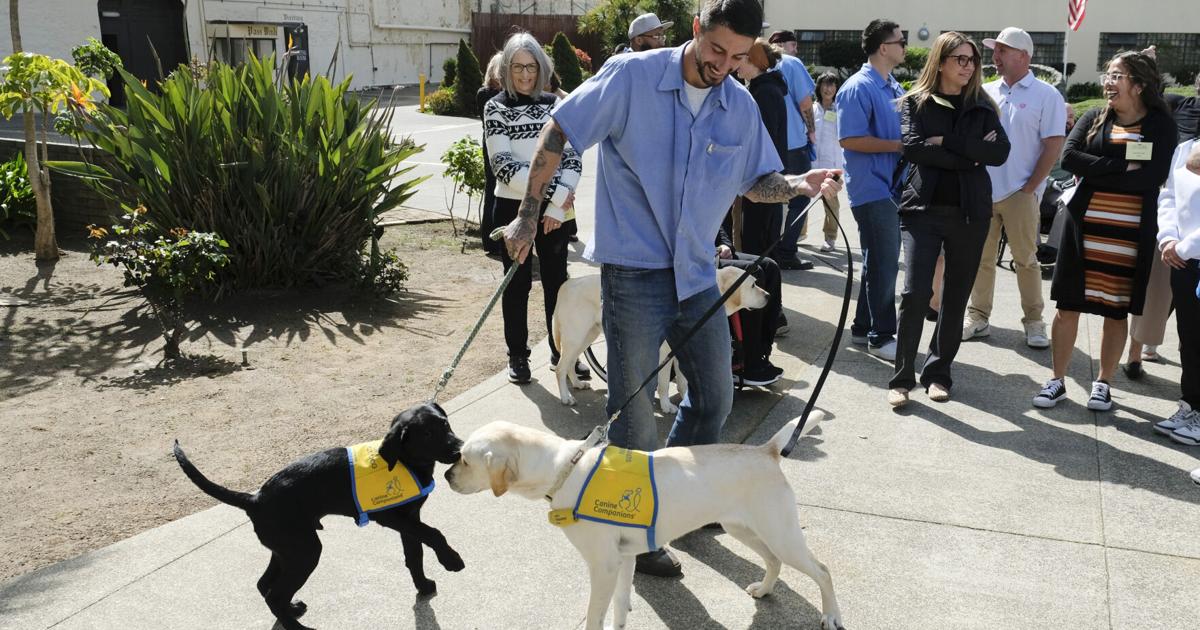Behind Bars, Beyond Bonds: Prisoners' Emotional Reunion with Their Canine Companions

Inside the stark walls of San Quentin State Prison, an extraordinary moment of joy and connection unfolded. Two black Labradors bounded into the facility, transforming the typically somber atmosphere into a heartwarming scene of pure emotion. Incarcerated men, typically confined by rigid prison protocols, were suddenly surrounded by wagging tails and unconditional love.
Tears welled up in eyes long accustomed to restraint, as warm embraces and genuine smiles replaced the usual prison interactions. The dogs moved from person to person, their gentle presence breaking through emotional barriers and offering a rare moment of pure, unfiltered happiness. Each tail wag and soft nuzzle seemed to whisper a message of hope and redemption, reminding everyone present that compassion knows no boundaries.
This unexpected reunion was more than just a simple visit—it was a powerful testament to the healing power of human-animal connection, proving that even in the most challenging environments, moments of genuine joy can still bloom.
